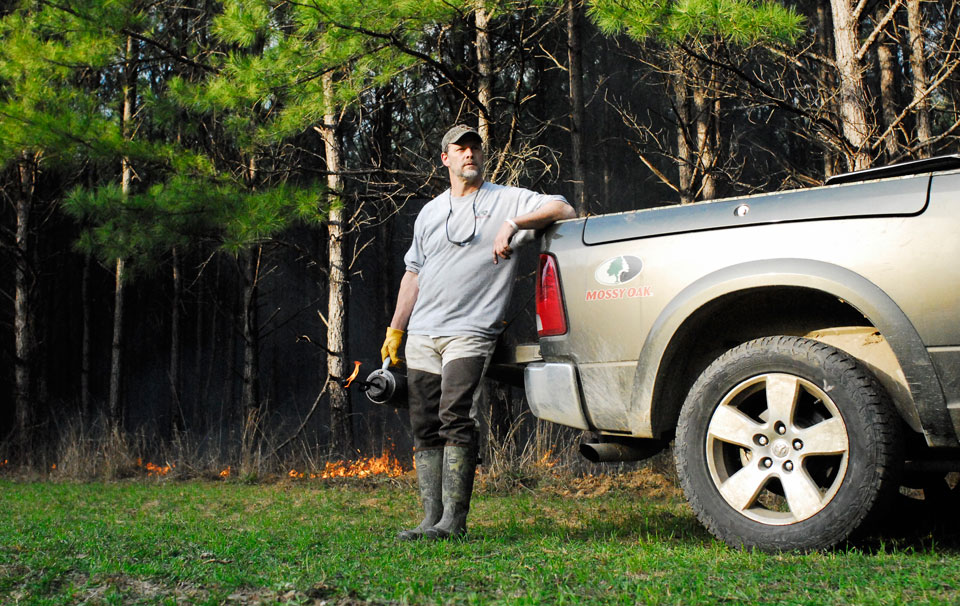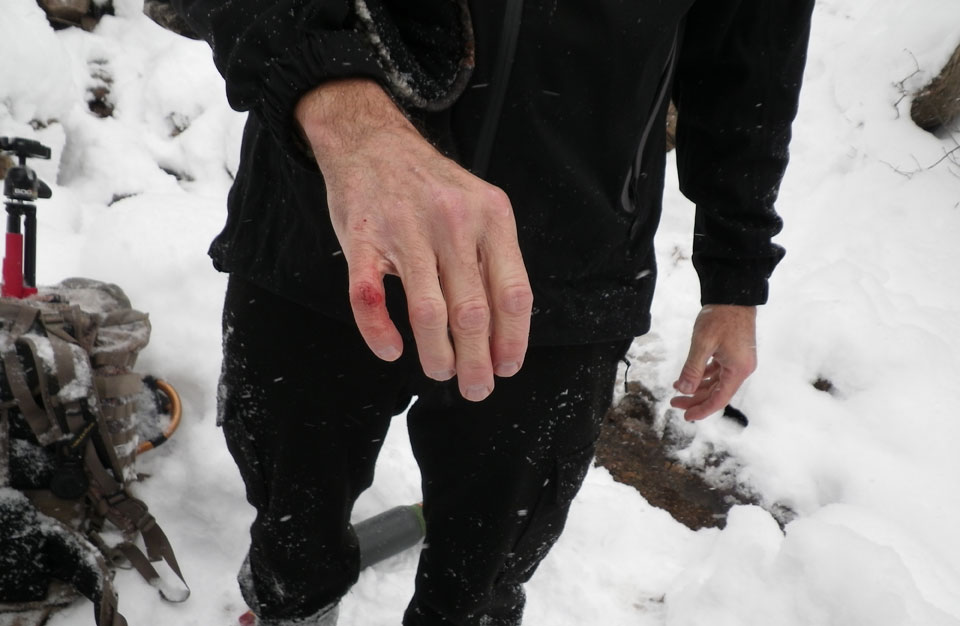We love spending time outdoors, but we also know it can be hazardous. To keep yourself, your friends and your family safe, you need to know how to treat a burn outdoors.
Burns often don’t appear serious and can sometimes be relatively painless. However, if underestimated or left untreated, burns can cause victims to go into shock or develop complications such as infections, scarring and heat exhaustion.
Burns can occur for a multitude of reasons, including over-exposure to the sun, getting too close to a campfire, an accident while cooking or scalding from boiling water.
Burns can also be sustained if safety measures aren’t followed during prescribed burning for forest management or greenhouse gas abatement. Therefore, it’s vital for outdoorsmen and those who live or work outdoors to know how to correctly and promptly treat a burn.

When to Treat a Burn
Treat all burns as soon as possible. Blistering, redness, whiteness, peeling skin and charring are all symptoms associated with burns. However, even if it doesn’t look like much or doesn’t particularly hurt, always treat a burn as a priority and follow the proper treatment procedures recommended by medical professionals.
How to Treat a Burn Outdoors
Knowing how to treat a burn is vital, especially outdoors. The most critical step is to move the victim away from the source of the heat to protect them from further harm. Avoid trying to move the cause of the burn away from the victim. This is to ensure no one else suffers an injury. If there are flames, try to put them out if it’s safe to do so. You shouldn’t risk becoming burned yourself under any circumstances.
Next, remove any clothing or accessories worn near the site of the burn, except in cases where clothing has become attached to the wound. In these instances, removing clothing could be painful and do more harm.
If the burn is located on the victim’s face or in their eyes, help them to sit up. Tell them to stay in an upright position as much as they can. Lying down with a facial burn causes blood to rush to the head and can increase swelling.
Cool It Down
Though it’s not always possible outdoors, medical experts recommend running lukewarm or cold (but not ice cold) water over a burn for 20 minutes. You can draw water from any nearby source, such as a lake or a river, if there are no breaks in the skin. However, if there are, using water that isn’t sterile could cause an infection.
Doctors also warn us not to use other cooling substances we might have in our packs like ice, foodstuffs, creams, lotions or anything greasy. You can use cooling dressings, like hydrogel burn pads, in lieu of water to reduce the temperature of the skin as well as to help cover the wound, preventing infection.
However, if the burn covers a large area of the body, don’t try and cool it. Doing so could reduce the victim’s overall body temperature to a dangerous level.
Cover It Up
Cover the burn to avoid bacteria entering through breaks in the skin, causing the victim to develop an infection. Doctors recommend a dry, non-stick dressing, but you can use ordinary bandages and gauze or even a clean t-shirt if that’s all you have.
If you have Bacitracin, Polysporin or Neosporin in your pack, apply it to the wound before covering it with a dressing. In an emergency, you can also apply honey directly to a minor burn. Honey helps to prevent infection and speeds the healing process.
If a dressing adheres to the surface of a burn, apply sterile water to moisten it. This helps to prevent further pain or damage to the wound.
Make sure you always carry pain-relieving medication like ibuprofen in your pack whenever you’re planning an excursion. Painkillers can help the victim feel more comfortable.
Stay Warm, Stay Hydrated
Though our first task is to cool a burn, we must also keep the victim warm. Failure to do so could inadvertently cause them to contract hypothermia should their temperature drop below 95° F. Hypothermia is more common in burns that cover a large area. Cover them with a blanket if possible, taking care that whatever you use can’t irritate the affected area.
Burn victims lose a lot of water from their bodies. To avoid dehydration and promote healing, make sure they drink plenty of water, preferably with added electrolytes.
When to Seek Medical Attention
Depending on the severity of the wound, burn victims will often need to seek medical assistance, sometimes very urgently.
Burn victims who are pregnant, over the age of 60 or under the age of five should go to the emergency room as soon as possible. Individuals who have diabetes or those with weakened immune systems—for instance, people receiving chemotherapy treatment for cancer—should also see a medical professional as soon as possible.
In other cases, anyone going into shock (characterized by a low temperature, dizziness, irregular breathing, sweating and clammy skin), suffering from smoke inhalation or with burns that either blister, char the skin or turn it white should receive prompt hospital treatment.
A medical professional should also treat any burns larger than the affected individual’s hand or those caused by acid or other chemicals as a matter of urgency.

The Ultimate Outdoors First-Aid Kit for Burns
Make a shopping list of the medical products you need to add to your first-aid kit to ensure you’re able to treat a burn if it’s required. Here’s a list of the essentials you should be packing.
- Disposable gloves
- Scissors
- Sterile water
- Cooling gel/dressings
- Dry, non-stick bandages
- Gauze
- Medical tape
- Blanket
- Painkillers
- Neosporin
We love the outdoor life, but it’s crucial that our safety is our top priority to avoid ourselves or the others we’re with from becoming injured. It is also vital we understand when the intervention of a medical professional is necessary. Use these tips to treat minor injuries where you can, but always ensure you follow proper medical advice and know when it’s time to dial 911.






























